






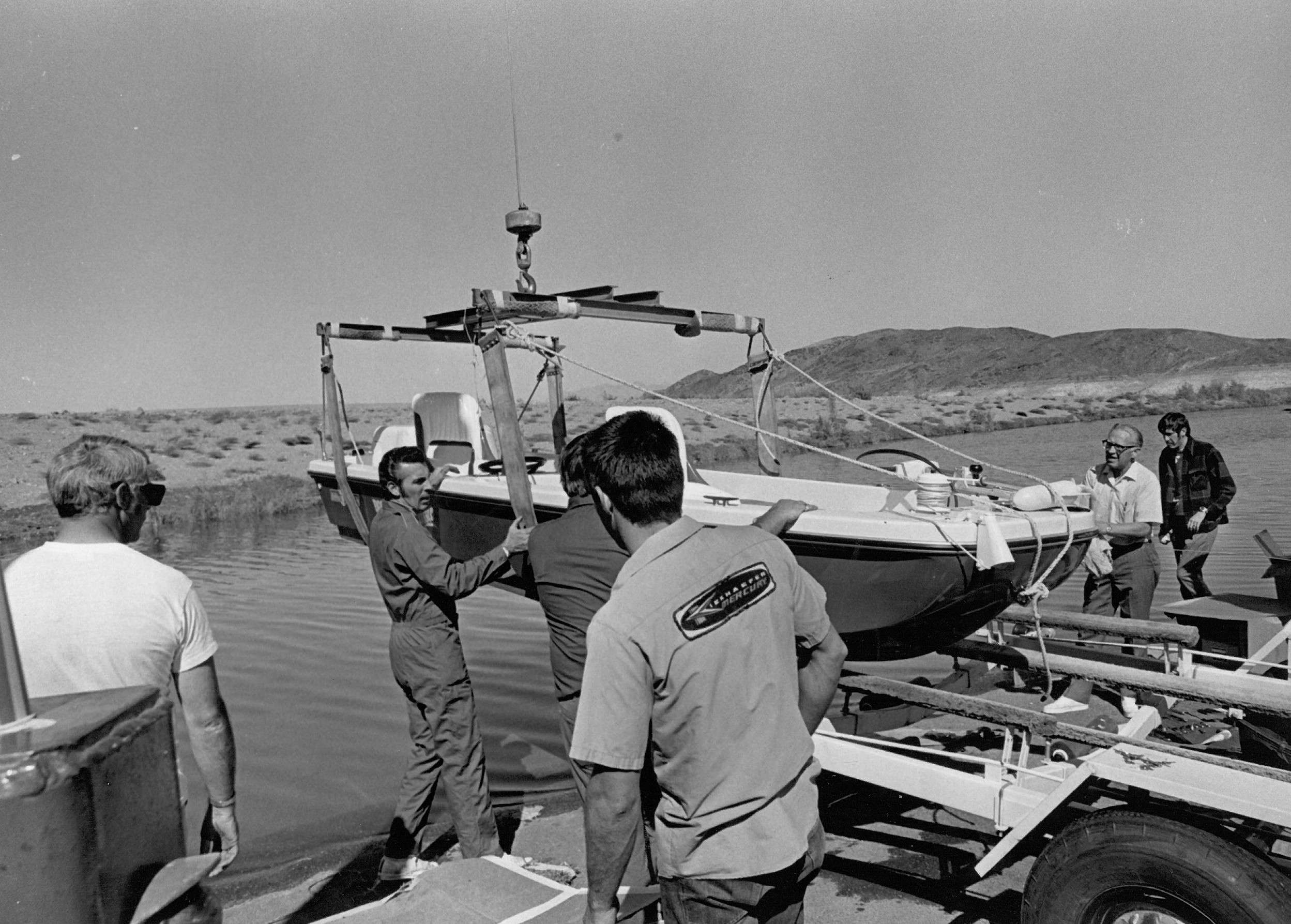







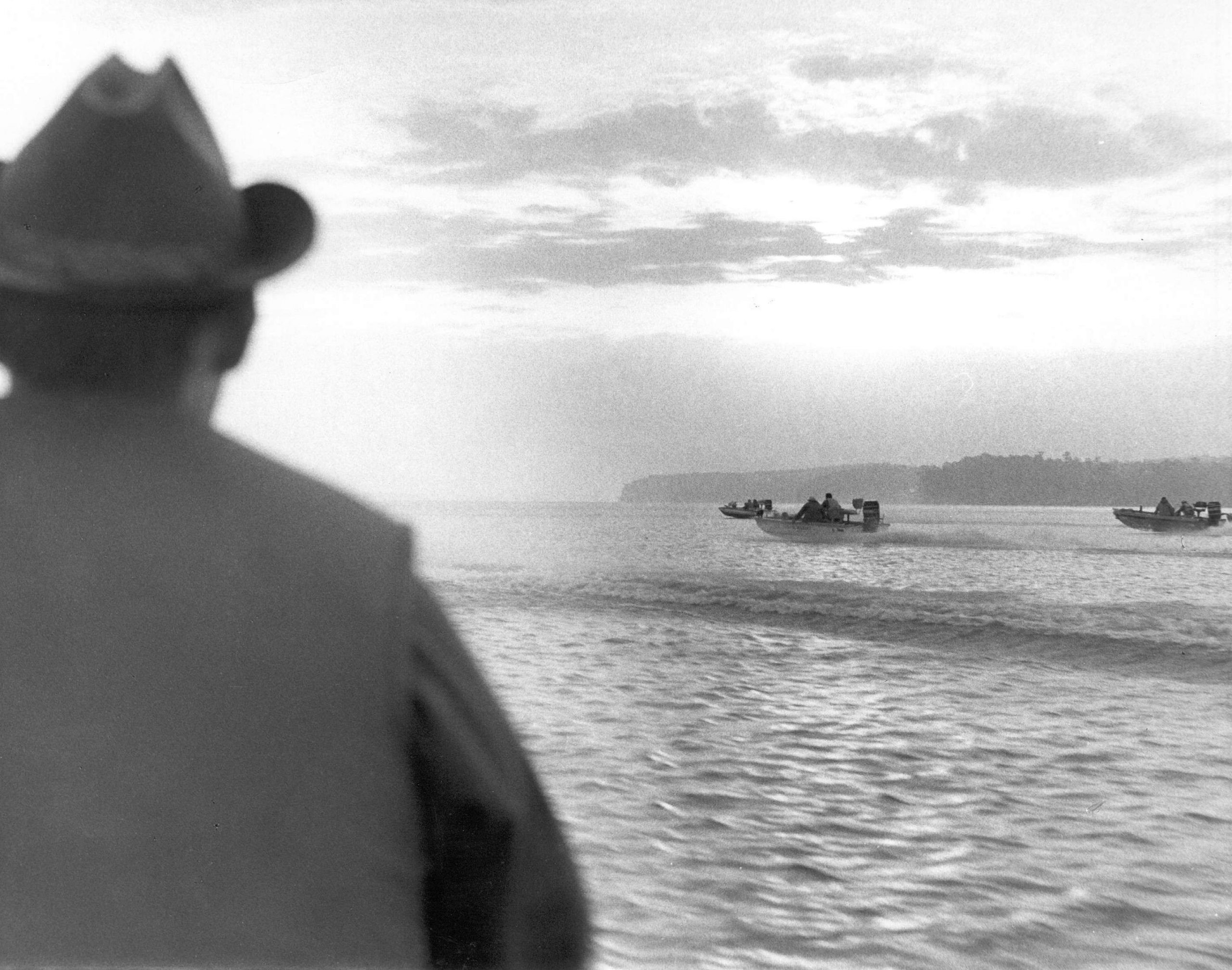





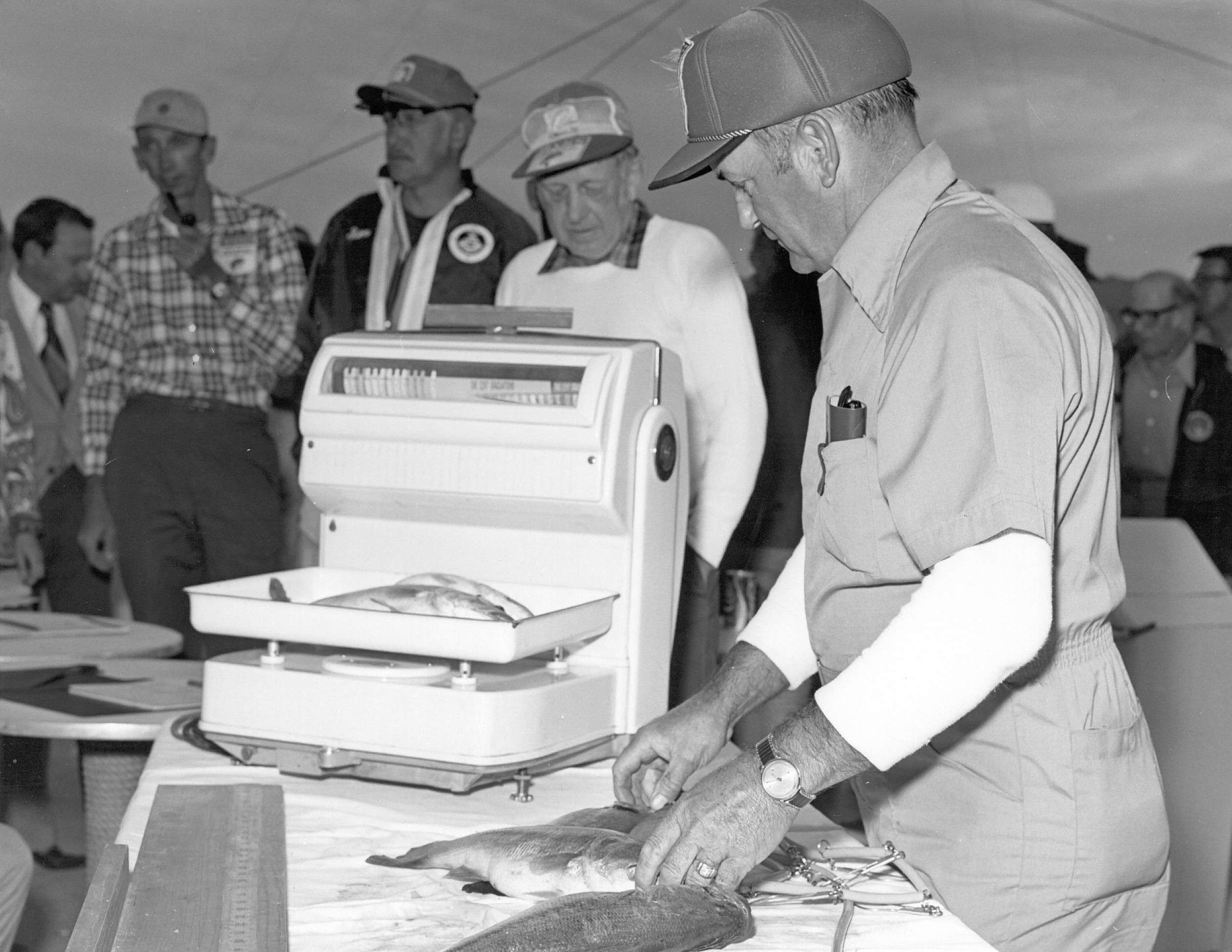







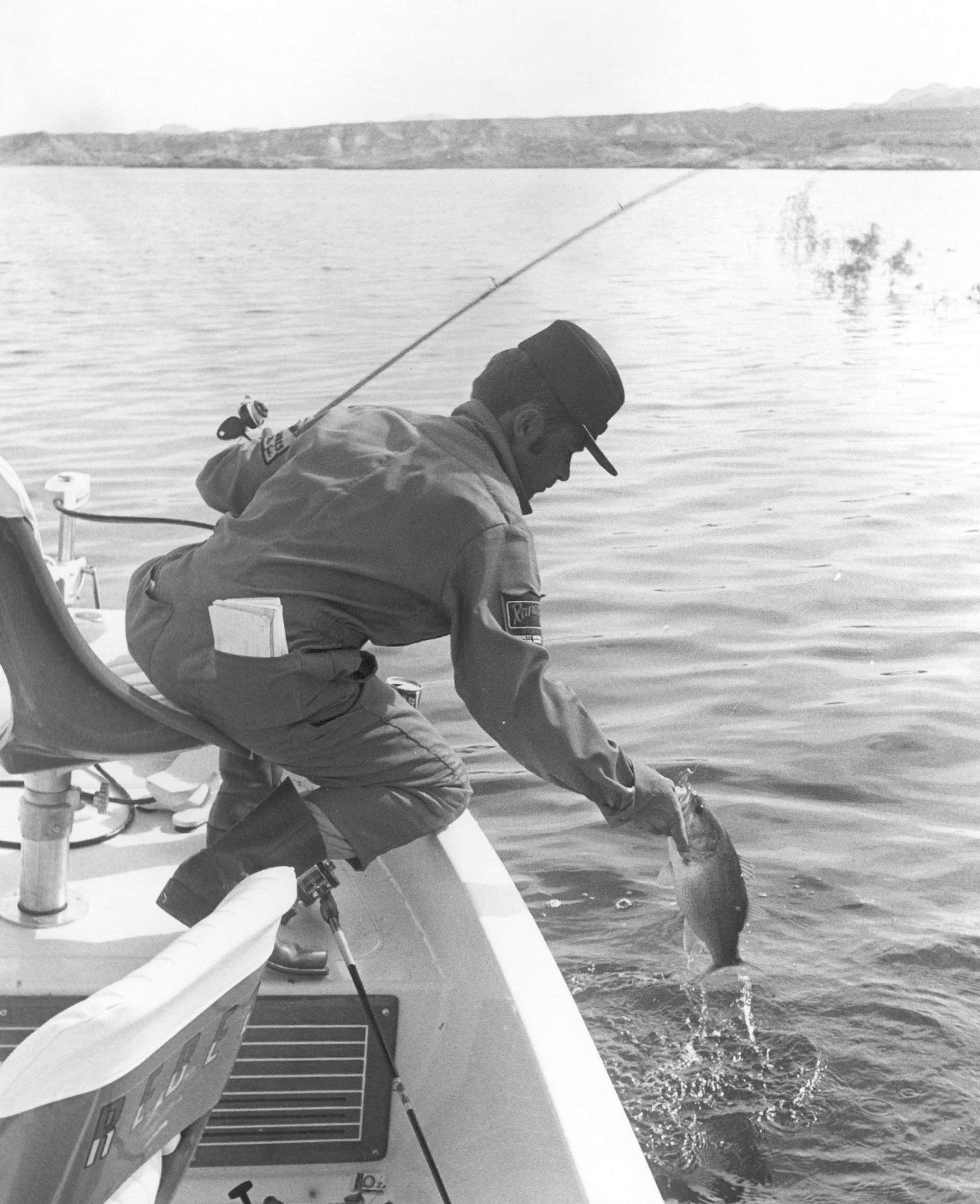







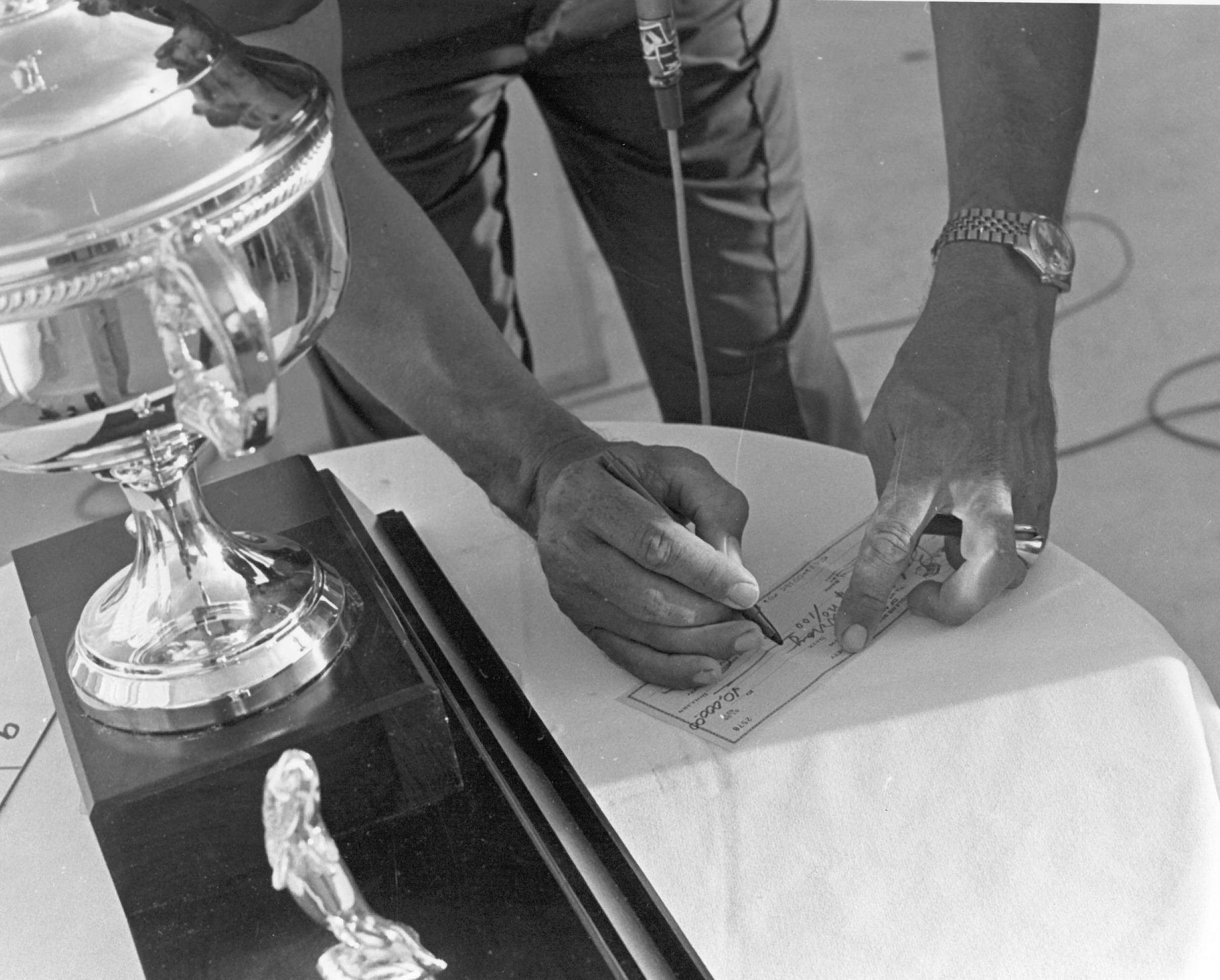



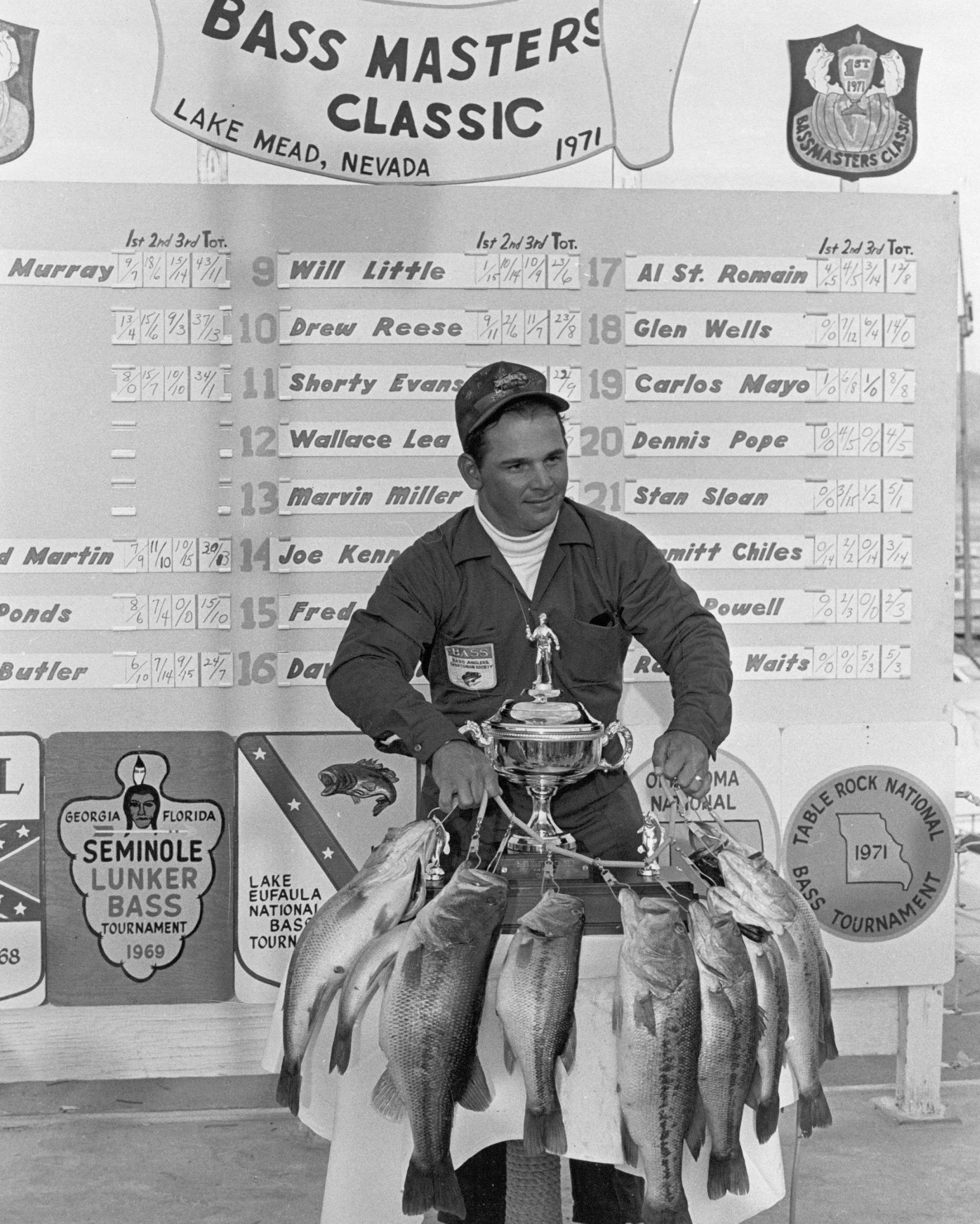

Please enter your details.
We cannot find an active B.A.S.S. Membership for the information you have provided. Please renew your membership here.We cannot find an active B.A.S.S. Membership for the information you have provided. Please try again.Scheduled maintenance. We'll be back shortly. If you continue to have trouble please contact customer service at 877-BASS-USA.
In October 1971, Ray Scott stepped off a plane in Las Vegas, Nev., leading a group of 24 anglers into the first ever Bassmaster Classic.









































